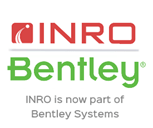Understanding traffic movements and patterns with Location Based Services
Azim Bhutta & Lauren Walker
Veitch Lister Consulting, Victoria
This presentation was delivered at the 2021 Online Conference Series and until October 2022 is only available to registered delegates and Content Access Pass holders via Interchange. For information on accessing this and other presentations please review the Content Access Pass options.
ABSTRACT
Location based services (LBS) data is gathered from smart phone applications that use sensors within the phone including Global Positioning System (GPS) to estimate the location of a user's phone. As an emerging data source, it offers insights into travel patterns that were previously unavailable to transport planners and modellers, including the detailed analysis of travel patterns, identifying trip origins and destinations, as well as the routes taken by users. More traditional methods of inferring user behaviour include numberplate recognition and origin-destination travel surveys are limiting, both in terms of sample size and in their ability to assess changes in travel behaviour to changing travel conditions such as congestion. Using LBS as an alternative data source can be particularly powerful, as the data can illustrate the interaction between peak level traffic conditions and user behaviour.  With a focus on Melbourne's Alexandra to Macarthur Parade corridor (which according to RACV's RedSpot survey is Victoria's'worst road') this presentation shows how LBS data can be used to better understand the function of different roads in the transport network at different times of the day, and potential causes of breakdown in network performance. The results of this research have identified cases of major rerouting in response to congestion for long-distance travel, and instances of'rat-running' for more localised trips. The insight provided by these findings presents opportunities to identify and promote viable sub-routes, as well as discourage the misuse of smaller roads. This also opens the door to further studies in identifying tipping points in congestion levels where users would start to identify and use alternative routes in their journey.
Author
Azim Bhutta | VLC
Azim Bhutta has a background in Geographic Information Systems (GIS), and has worked in transport planning for the last three years. Working on a number of local and state projects, his roles have included the management and maintenance of VLC’s transport models, analysing of demand forecasts, and processing large datasets of transport statistics.
Azim’s experience in working with GIS in various fields, ranging from demographic and census mapping to the planning and design of windfarms and pipelines.
During university, Azim was awarded a First Class Honours for his studies, including his research piece gaining an understanding of the relationships between the demographics and accessibility of Melbourne residents.







